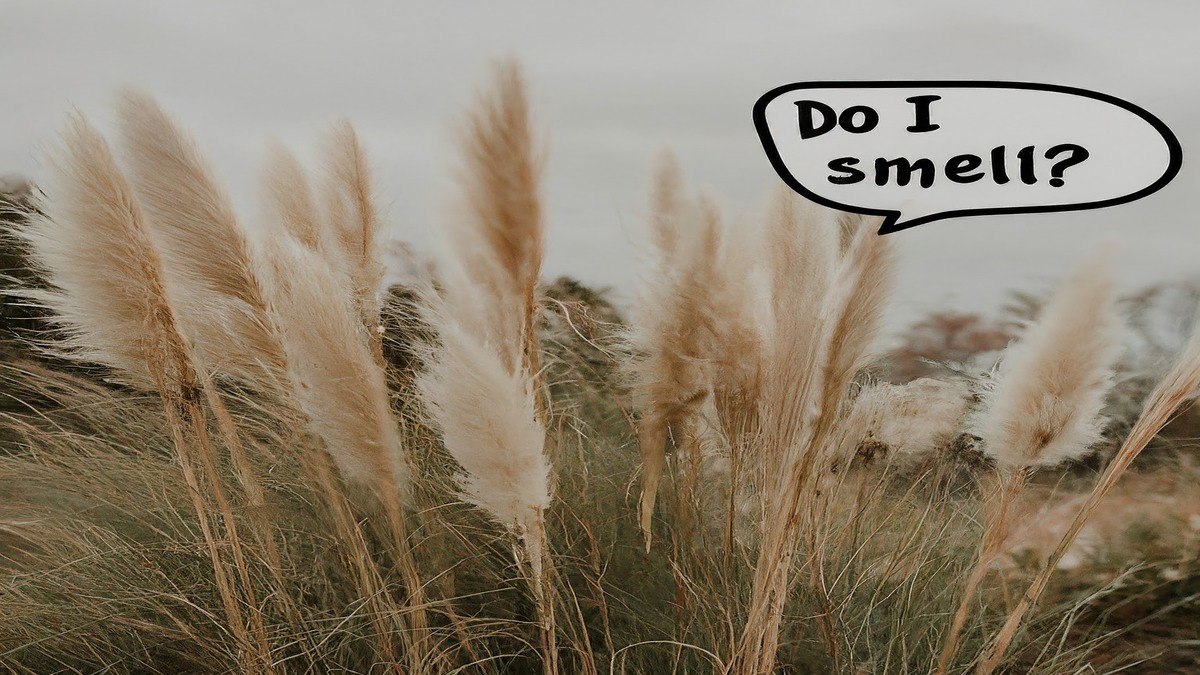Does pampas grass smell? When it comes to the smell of pampas grass, there seems to be some variation in people’s experiences. Fresh pampas grass does not have much of a notable smell, but when it is dried, it may have a hay-like smell. However, some people have reported a strong, unpleasant smell from dried pampas grass. The smell can be difficult to get rid of and tends to linger even after the grass has been allowed to air out for a period of time.
Understanding the Natural Smell of Pampas Grass
The Natural Smell of Pampas Grass
Pampas grass, in its fresh state, does not have much of a notable smell. However, when it is dried, it may emit a hay-like smell. This smell is often subtle and may not be noticeable unless you are in close proximity to the grass. Some people have reported a strong, unpleasant smell from dried pampas grass, but this seems to be less common.
Factors Influencing the Smell of Pampas Grass
The smell of pampas grass can be influenced by several factors:
- Drying Process: The process of drying pampas grass can intensify its natural smell, transforming it from a subtle, fresh aroma to a stronger, hay-like smell.
- Environmental Conditions: The natural habitat and growing conditions of pampas grass can also influence its smell. For instance, the soil type, climate, and overall health of the plant can impact the intensity and quality of its smell.
- Seasonality: The smell of pampas grass may vary depending on the season. For example, the grass may have a stronger smell during the blooming season.
- Individual Perception: Lastly, the perception of the smell can vary from person to person. What one person finds pleasant, another might find unpleasant.
While pampas grass does have a smell, it is typically subtle and may only become noticeable when the grass is dried. Various factors can influence this smell, making it a unique characteristic of this popular decorative plant.
Fresh vs. Dried Pampas Grass
Fresh vs. Dried Pampas Grass: A Tale of Two Scents
When it comes to the smell of pampas grass, there’s a distinct difference between its fresh and dried states.
Fresh Pampas Grass Fresh pampas grass, when it’s still growing and green, typically has a very subtle smell, if any at all. It’s often described as a fresh, grassy smell that’s quite pleasant and reminiscent of a lush meadow.
Dried Pampas Grass On the other hand, dried pampas grass can have a more pronounced smell. The drying process tends to intensify the natural aroma of the grass, transforming it into a stronger, hay-like smell. Some people find this smell comforting and earthy, while others may find it a bit too strong or even unpleasant.
The Drying Process and Its Impact on Smell The drying process plays a significant role in the smell of pampas grass. As the grass dries, the water content decreases, which can concentrate and intensify the natural oils and compounds that contribute to its smell. This is why dried pampas grass tends to have a stronger smell compared to its fresh counterpart.
Whether you prefer the subtle, fresh smell of pampas grass or the stronger, hay-like aroma of its dried form, there’s no denying that this versatile plant brings not only visual appeal but also a unique sensory experience to any space it adorns.
Why Pampas Grass Might Develop an Odor
Why Pampas Grass Might Develop an Odor
Pampas grass might develop an unpleasant smell due to a variety of reasons. Here are some common factors:
- Disease and Pests: Pampas grass can be affected by various diseases and pests. For instance, root rot can cause the roots to become soft and blackened, which could potentially lead to an unpleasant smell. Similarly, gray mold spots, a fungus that frequently affects flowers and spreads quickly, can also cause a bad odor.
- Environmental Factors: The natural habitat and growing conditions of pampas grass can influence its smell. For instance, the soil type, climate, and overall health of the plant can impact the intensity and quality of its smell.
- Improper Storage: If pampas grass gets damp while in storage, it could promote the growth of mold and mildew, which could produce an awful odor. Proper storage conditions will help extend the lifespan of your dried pampas grass and prevent it from developing an unpleasant smell.
While pampas grass is generally known for its aesthetic appeal rather than its smell, certain conditions and factors can lead to the development of an unpleasant smell. It’s important to consider these factors when growing or storing pampas grass to ensure it remains a pleasant addition to your home or garden.
Tips for Keeping Pampas Grass Fresh and Odor-Free
Keeping Pampas Grass Fresh and Odor-Free: A Comprehensive Guide
Preparing Pampas Grass for Indoor Use When preparing pampas grass for indoor use, there are a few key steps to follow:
- Selection: Choose pampas grass with full and fluffy plumes that are intact and not shedding.
- Trimming and Cleaning: Remove any excess leaves or debris, and gently shake the stems to remove any loose seeds or pollen.
- Drying: Hang the stems upside down and dry them out for three weeks. Once they’re ready to place in a vase, turn them over and spray with a matte clear varnish, a floral sealant, or hairspray to help them last.
Storing Pampas Grass to Prevent Odors Proper storage of pampas grass is crucial to prevent the development of unpleasant odors:
- Humidity-Free Space: Store them in a humidity-free space and ensure that there is no moisture content in the environment.
- Avoid Direct Sunlight: Prolonged exposure to direct sunlight may cause discoloration of the plumes and will make them excessively dry.
- Proper Container: Choose a storage container that’s loose enough to let the plumes breathe and not crush the grass, but also structured to help it keep its shape.
Natural Methods to Freshen Up Pampas Grass There are several natural methods to freshen up pampas grass:
- Shaking: Give each stem a good shake to help the plumes open up naturally.
- Hair Dryer: Use a hair dryer on a cool setting to gently blow air through the plumes.
- Hairspray: Spray hairspray directly onto the plumes and then shake out the excess. This can help keep your pampas grass fluffier for longer.
By following these tips, you can keep your pampas grass fresh, fluffy, and odor-free, enhancing the beauty of your indoor space.
How do you use pampas grass indoors?
Addressing Common Concerns
Does Pampas Grass Smell Bad Over Time?
Pampas grass does not typically develop a bad smell over time if it has been preserved correctly. However, like any organic material, it may start to decompose and emit an unpleasant odor if it’s not stored properly or if it becomes damp. It’s important to store pampas grass in a dry, well-ventilated area to prevent this.
Impact of Pampas Grass on Indoor Air Quality
Pampas grass itself does not have a significant impact on indoor air quality. However, if it’s not properly maintained or if it becomes a breeding ground for mold or pests, it could potentially affect the air quality. For instance, pampas grass can harbor pests and its feathery plumes can disperse pollen into the air, which could be an irritant for those sensitive to it.
Managing and Preventing Odor Issues in Home Decor
Managing and preventing odor issues in home decor involves regular cleaning and maintenance. Here are some tips:
- Regular Cleaning: Commit to a regular cleaning routine that includes dusting, mopping, and vacuuming.
- Proper Ventilation: Open up windows daily to allow fresh air to displace stagnant, odor-laden air.
- Prompt Disposal of Waste: Dispose of food waste promptly and run an exhaust hood while cooking.
- DIY Solutions: Use household items like baking soda and vinegar to tackle odors. Baking soda absorbs odors, while vinegar breaks down odor particles and serves as a disinfectant.
By following these tips, you can keep your home smelling fresh and prevent odor issues from arising. Remember, the key to maintaining a pleasant-smelling home is regular cleaning and proper storage of items like pampas grass.
Eco-Friendly Solutions
Natural Deodorizers for Pampas Grass
If your pampas grass develops an unpleasant smell, there are several natural deodorizers you can use to freshen it up:
- Baking Soda: Known for its odor-absorbing properties, baking soda can be sprinkled around the base of the pampas grass or even lightly dusted on the plumes.
- Vinegar: Vinegar, especially horticultural vinegar with a high concentration of acetic acid, can be effective in neutralizing odors. However, it should be used sparingly and carefully to avoid damaging the grass.
- Essential Oils: Essential oils like lavender, eucalyptus, or lemongrass can be lightly sprayed on the grass to give it a fresh smell.
Sustainable Practices for Maintaining Pampas Grass Indoors
Maintaining pampas grass indoors in an eco-friendly way involves several sustainable practices:
- Water Conservation: Pampas grass doesn’t require constant watering. Once established, it can survive just from natural rainfall. In a hot and dry climate, irrigate the grass weekly.
- Organic Fertilizers: Use organic fertilizers to provide necessary nutrients to the grass. This not only helps the grass grow but also reduces the environmental impact compared to synthetic fertilizers.
- Natural Pest Control: Instead of using chemical pesticides, opt for natural pest control methods. This could include introducing beneficial insects or using homemade sprays made from natural ingredients.
- Proper Ventilation: Ensure the area where the pampas grass is kept is well-ventilated. This helps prevent the growth of mold and mildew, which can cause unpleasant odors.
- Responsible Disposal: When the pampas grass has reached the end of its life, dispose of it responsibly. Composting is a great option, as it returns valuable nutrients back to the soil.
By following these tips, you can enjoy the beauty of pampas grass in your home while also being mindful of the environment.
Why Do You Spray Hairspray on Pampas Grass?
Conclusion
In conclusion, while pampas grass can add a touch of nature’s elegance to your home decor, it’s important to consider its smell and how it might affect your indoor environment. With proper care and maintenance, you can enjoy the beauty of pampas grass while keeping your space fresh and odor-free. Remember, the key to a pleasant-smelling home is regular cleaning and proper storage of items like pampas grass.
FAQs
Here are some FAQs:
- What is the natural smell of pampas grass? Fresh pampas grass typically has a subtle smell, while dried pampas grass can have a stronger, hay-like smell. The smell can vary based on factors like the drying process, environmental conditions, and individual perception.
- Does the smell of pampas grass change over time? Pampas grass does not typically develop a bad smell over time if it has been preserved correctly. However, like any organic material, it may start to decompose and emit an unpleasant odor if it’s not stored properly or if it becomes damp.
- Can the smell of pampas grass affect indoor air quality? Pampas grass itself does not have a significant impact on indoor air quality. However, if it’s not properly maintained or if it becomes a breeding ground for mold or pests, it could potentially affect the air quality.
- How can one manage and prevent odor issues with pampas grass in home decor? Regular cleaning, proper ventilation, and prompt disposal of waste can help manage and prevent odor issues in home decor. Using natural deodorizers and following sustainable practices can help maintain pampas grass indoors in an eco-friendly way.



Pingback: Pampas Grass: A Bug Magnet or Not?